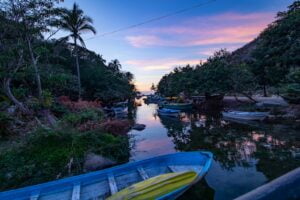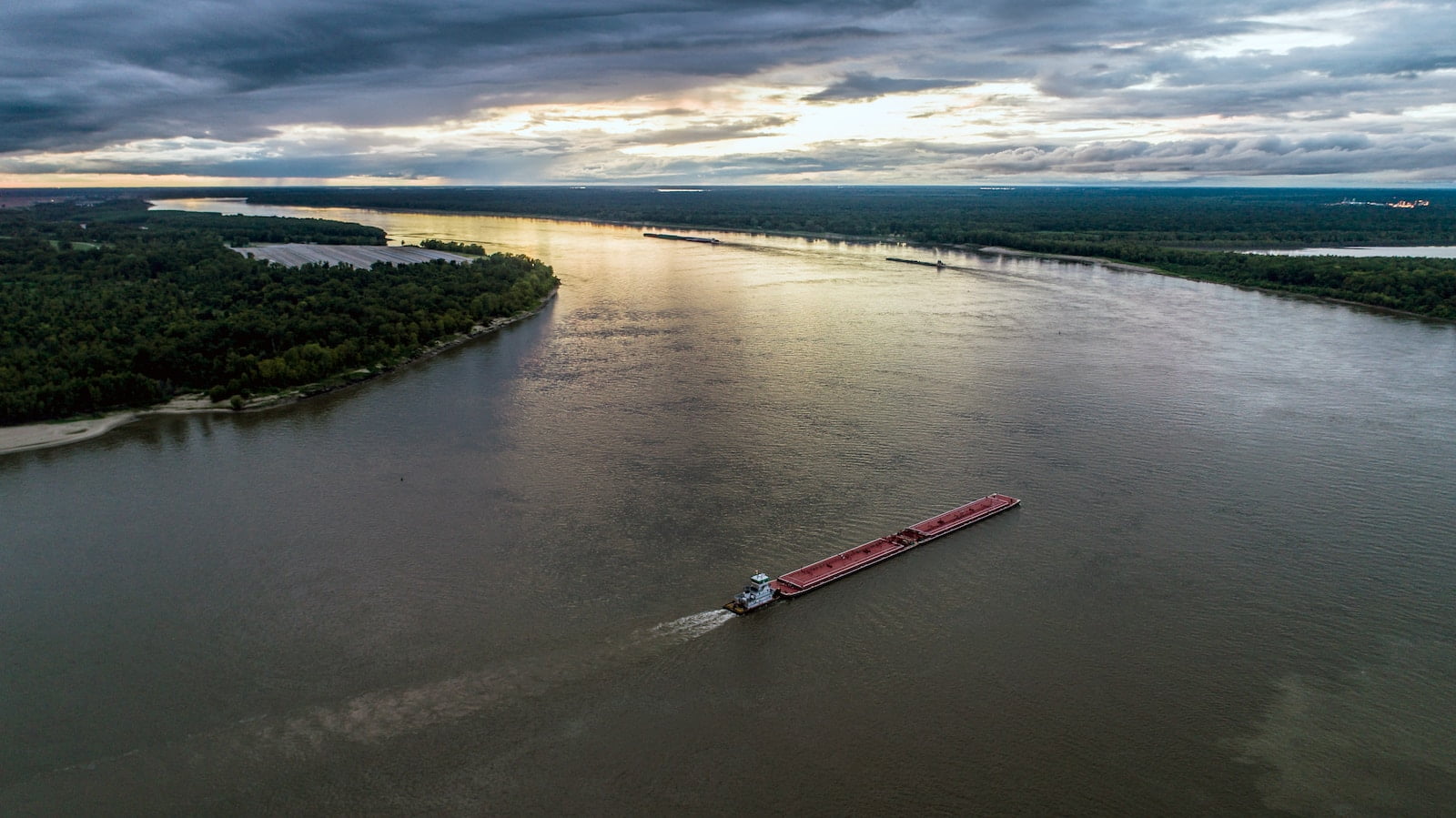The Confluence of the Gulf of Mexico and the Mississippi River
The Gulf of Mexico is a large body of water located along the southern coast of the United States. It borders Texas, Louisiana, Mississippi, Alabama, and Florida. This massive body of water covers over 600,000 square miles and is connected to the Atlantic Ocean through the Straits of Florida.
One of the major rivers that feeds into the Gulf of Mexico is the legendary Mississippi River. This iconic river winds its way southwards for over 2,300 miles, starting at Lake Itasca in Minnesota before meeting its end where it converges with the Gulf of Mexico. This meeting point between river and sea creates a unique and ecologically important area known as the Mississippi River Delta.
Also Read : Honda Shogo: The New Tiny Electric Car
The Formation of the Mississippi River Delta
Over thousands of years, the Mississippi River has carried sediment consisting of silt, clay, sand, and organic matter downriver and deposited it as it enters the slower moving waters of the Gulf. This deposition of sediment has gradually built up the protruding land formation characterizing the Mississippi River Delta.
As the river changed course periodically, it continued building new lobes of the delta over time through this natural process. This has resulted in the Mississippi River having six historic distributary channels that each formed part of the delta system during different epochs. The most recent of these is the Modern Delta that began forming around 700-800 years ago.
Also Read : Sugar : The Sweet Poison
The Mississippi River Delta constitutes a major river delta and wetland area covering over 3 million acres and stretching out into the Gulf of Mexico for around 100 miles. The delta provides a diverse range of wetland habitats including freshwater, brackish and saline marshes. These fragile ecosystems support a wealth of plant and animal species.
Where River Meets Sea
The Mississippi River disgorges its waters and suspended sediments into the Gulf of Mexico through the Head of Passes located at the mouth of the Birdfoot Delta. This is the point where the mighty river completes its epic journey to the sea.
As the brown, sediment-laden river collides with the clearer blue-green waters of the Gulf, it creates a vivid demarcation zone between the two water bodies. The sediment-rich freshwater river water essentially “floats” on top of the denser saltwater from the Gulf initially, before gradually mixing together.
Read Now : Malaria Vaccine in the US: What You Need to Know
This meeting of different water densities and chemistries leads to stratification of the water column and the creation of fronts or boundaries between these water masses. The mixing dynamics in this zone play an important role in distributing sediments, nutrients, and contaminants introduced by the river. These materials can impact marine ecosystems and species far out into the Gulf itself.
The sediment load carried by the Mississippi River also builds new wetland area where it enters the Gulf. A plume of sediment forms where the river water mass expands and slows upon meeting the sea. This prompts deposition of sediment that counteracts coastal erosion and enables new delta landscapes to emerge.
Also Read : The World’s Most Venomous Fish
However, this land-building capacity has diminished dramatically due to flood control measures and dredging activities modifying the river’s natural flow regime. Today, the Mississippi River Delta is disappearing at an alarming rate as sea level rise and erosion outpace new sediment deposition.

Diverse Delta Ecosystems
Where the Mississippi River flows into the Gulf of Mexico, it sustains a mosaic of productive and biologically rich aquatic habitats. These include mudflats, marshes, swamps, oyster reefs, and shallow open water areas.
Freshwater wetlands occur upstream near the area where the river first diverges into multiple branches. Further downstream, the wetlands grade into brackish and saline marshes with increasing salinity and tidal influence. These wetlands filter pollutants and nutrients from the river, provide nursery habitat for fisheries, and buffer storm impacts.
The Mississippi River Delta represents critical nesting and stopover habitat for migratory birds including millions of ducks, geese and shorebirds. Many species like the endangered piping plover rely on the delta’s beaches, mudflats and marshes during migration and overwintering.
The delta also offers habitat for wildlife like muskrats, mink, river otters, and alligators. However, delta ecosystems have been substantially altered and degraded by human activities. Efforts to restore and conserve remaining wetlands and improve delta sustainability continue today.
Also Read : Why Columbus Day is celebrated on October 12 – History
Threats Facing the Delta
The Mississippi River Delta faces an uncertain future, with climate change and human activities posing major threats to these invaluable ecosystems.
Sea level rise is inundating low-lying coastal wetlands and pushing salty Gulf water further upstream into freshwater marshes. This increase in salinity kills off vegetation and further weakens wetlands, making them more vulnerable to erosion. Studies project most of the delta could be lost within 50-100 years as seas continue rising.
Channelization of the Mississippi for navigation and flood control has disrupted the river’s natural sediment distribution processes that sustain delta wetlands. Dams and levees now cut off key sediment sources, while dredging for shipping maintains deep channels that shoot sediment far out into the Gulf.
Agricultural runoff, urban pollution, and other discharges have degraded delta water quality. Nutrient pollution from fertilizers fuels algae blooms that lead to hypoxia (low oxygen) zones in the Gulf that threaten marine life. Pollution and coastal development have also severely impacted wildlife habitats.
Restoration efforts like wetland replenishment, structural protection measures, and modified river management strategies aim to extend the lifespan of the Mississippi River Delta. But preventing its complete loss will require global action to limit climate change and much greater commitment to protecting delta ecosystems.
Also Read : 5 Kings of the Stock Market
Experiencing the River Delta
Despite the environmental challenges it faces, the Mississippi River Delta remains a compelling destination for visitors. Several National Wildlife Refuges provide opportunities to discover the region’s natural splendor through hiking trails, waterways, and observation platforms.
Boat tours cruise along the river passes through the delta allowing glimpses of birds, alligators, and fish in their native habitats. Airboats zip over the marshes to provide thrilling, up-close access. Fishing charters pursue the delta’s bountiful populations of shrimp, redfish, trout and other species.
The history and cultural diversity of the communities dotting the delta also enrich any visit. In New Orleans, music clubs feature authentic jazz and Creole cuisine creates unforgettable dining experiences. River towns like St. Francisville offer charming Southern hospitality and antebellum architecture.
While exploring the Mississippi River Delta, witnessing both its beauty and its vulnerability makes the need for conservation here vividly clear. Visiting this special place can inspire action to help safeguard its future. As the river’s journey concludes, our shared commitment must be to preserve the endangered riches of its wondrous delta.
Frequently Asked Questions About the Mississippi River Delta
What are some key facts about the Mississippi River Delta?
2. Consists of freshwater, brackish, and saltwater marshes and wetlands
3. Supports over 400 species of fish, birds, animals and plants
4. Home to 2.7 million migratory waterfowl that winter in the delta
5. Has lost over 1,900 square miles of coastal wetlands since 1900
6. Roughly 90% of delta wetlands could be lost by 2100 due to sea level rise
Why is the Mississippi River Delta Disappearing?
1. Sea level rise and erosion
2. Lack of new sediment deposition as the river’s flow has been controlled
3. Subsidence or sinking of delta soils
4. Saltwater intrusion killing freshwater vegetation
5. Human impacts like dredging, dams, levees, and pollution
What is being done to save the Mississippi River Delta?
Efforts to save the delta include:
- Wetland restoration through depositing new sediment
- Building protective rock breakwaters and barrier islands
- Modifying river management to simulate natural flooding regimes
- Creating diversions to redirect river water and sediment into wetlands
- Monitoring ecosystem health with new technologies
- Establishing marine protected areas
- Engaging local communities in restoration and adaptation
Why is the Mississippi River Delta important?
The delta is important because it:
- Protects inland areas from storm surges and flooding
- Provides nursery habitat supporting Gulf of Mexico fisheries
- Filters pollution and buffers impacts on the Gulf
- Supports billions in economic activity tied to fisheries and oil and gas
- Represents a globally unique and biodiverse ecosystem
- Sustains local communities and cultures adapted to the delta
Read Now : The Leech Therapy: The Legitimate Use of Leeches in Medicine
What can I do to help protect the Mississippi River Delta?
You can help protect the delta by:
- Visiting respectfully and learning about its challenges
- Reducing your carbon footprint to mitigate climate change
- Volunteering with conservation organizations working locally
- Supporting Mississippi River restoration policies and funding
- Making sustainable seafood choices benefiting Gulf fisheries
- Spreading awareness of the issues facing the delta



